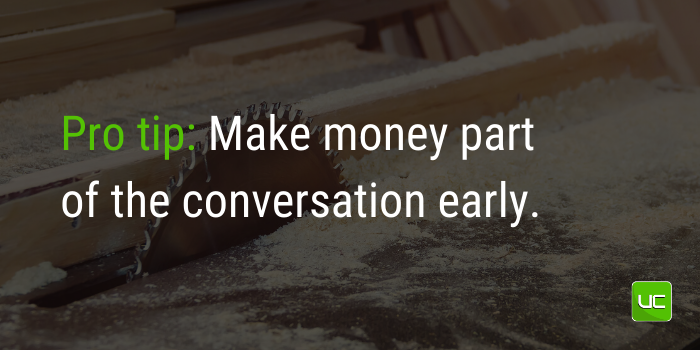5 Things Every Valuable Cabinet Shop Owner Takes Seriously - Part 1
If you want to own a thriving cabinet shop, then there are five very important things that you need to prioritize. In this article, I’ll share the first three things that should be top of mind for any cabinet shop owner.
1. KNOW YOUR MARGINS AND KEEP THEM AT OR ABOVE INDUSTRY STANDARDS
For me, margins were always sort of a convoluted mess until I found a simple way to think about them. In my shop, we use margin and throughput interchangeably. Other shops may call it gross profit or gross margin. For us, throughput makes sense, but use what works for you.
When you assess your margins, you’re really measuring the amount of product flowing through your shop. It’s as simple as sales minus cost of goods sold.
Gross Sales - Cost of Goods Sold = Throughput
Your CoGS includes all of the physical pieces that can be attributed directly to a job.
CoGS = plywood, hardwood, commissions, contract labor, etc.
You should include anything that you need specifically because you won a job in your CoGS. Things that are NOT included in CoGS are expenses you pay regardless of the sales that you make. Overhead, labor, and other fixed expenses are NOT a cost of goods sold.
A lot of shop owners incorrectly calculate margins by including labor in the CoGS, but labor is a fixed cost. Labor may go up and down month to month, but people work approximately the same hours over time. Like it or not, labor IS a FIXED cost!
Tell me: how do YOU calculate margin?
Keeping your margins at or above industry standard is one of the most significant ways to add value to your cabinet shop. If you can drive your costs down just a few percent, you can have a huge impact on your net profit.
Press play to learn more!
2. HAVE A STABLE GROUP OF EMPLOYEES AND MANAGEMENT
Hiring and retaining quality employees is underrated by most businesses. So many business owners just accept that not having great employees is the norm.
You have to find a recipe that works for you to find, hire, and retain good employees. Once you find several quality employees, your shop floor becomes self-policing. Your employees will take care of themselves because they don’t want one bad egg to ruin it for everyone.
Your team should always be driving toward the same goal as you. Finding quality employees allows you to create a great work environment where your people actually want to be. Not only will the environment help you retain your employees and end the cycle of persistent turnover, but your shop will become a place that attracts other high-quality candidates.
Press play to learn more!
3. HAVE A SYSTEM TO EFFICIENTLY COLLECT MONEY
You need to put in place a consistent collection process where, regardless of who is in the office, money is being consistently collected when jobs are complete.
Pro tip: Make money part of the conversation early.
Set the expectations for your customer from the beginning. Don’t keep them in the dark. When you’re talking about design, measurements, and materials, tell your client how you collect payment. Money should be a part of the conversation in the first conversation.
You may also want to consider giving an incentive for customers to pay early. For example, we offer a 2% discount for upfront payment. We also waive the credit card fee for customers who pay in full. For us, losing the credit card fee is offset by the benefit of having cash in hand early.
Press play to learn more!
IT’S TIME TO WORK ON YOUR BUSINESS
If you aren’t already implementing these first three tips, then it’s time for you to step off the shop floor and start working on your business. Owners who want their business to grow beyond their personal capacity strive to maintain strong margins, cultivate an excellent group of employees, and implement an efficient system to collect payment.
Tell me: which of these are you still working on? What are your persistent pain points?
Click to download my best tips for creating a team of highly motivated workers.



